afterbirth
What is the afterbirth?
On the one hand, the third and last phase of the natural birth process is referred to as the afterbirth, and on the other hand it is understood to be the components of the fruit cavity expelled in the course of the mentioned afterbirth phase. After the opening phase and the subsequent expulsion phase, the postpartum phase follows.
This begins with the delivery of the child and describes the period until the complete birth of the mother cake, i.e. the placenta. Expulsion occurs through postpartum labor. In addition to the placenta, the umbilical cord, blood vessels and membranes are other components of the afterbirth. In some cases, the afterbirth also includes a second placenta.
You might also be interested in the topic: Placenta

When does the afterbirth follow?
The postpartum phase follows the delivery of the child and usually lasts up to thirty minutes on average. This means that about half an hour passes between the vaginal delivery of the child and the complete expulsion of the afterbirth, i.e. the placenta, the umbilical cord and the membranes.
Learn more at: Placental detachment after childbirth
However, there are factors that can speed up or delay the process. If the afterbirth is not completed after about thirty minutes and concomitantly increased bleeding occurs, this can be an indication of problems with the dissolution of the placenta. This can be a serious complication that can result in profuse blood loss.
If no heavy bleeding is observed and the rest of the course is normal, the afterbirth can be expected to take a little longer than thirty minutes. The active ingredient oxytocin, which promotes labor, is one of the options for controlling the postpartum phase and, if necessary, shortening it. It can also be administered as prophylaxis, i.e. as a preventive measure, in order to guide and control the postpartum phase in the best possible way.
Read more on the topic: Birth
Complications
Various complications can arise during the postpartum phase. The most important complications include problems with the solution of the mother cake. This means that the placenta cannot or only incompletely loosen during the afterbirth labor and remains in the uterus. There can be a variety of reasons for this. For example, the placenta itself can have abnormalities in which it does not adhere to the uterus, as it normally does, but grows through it in parts or even completely (Placental insertion disorder).
In addition, the uterus can have a functional weakness in contraction, a Uterine atony, whereby she is not able to move the afterbirth to the outside through the force of labor alone and the placenta remains inside (Placenta adhaerens). The uterine atony is often accompanied by profuse bleeding.
Another example of a placental detachment disorder can be a spasm, i.e. a cramp-like closure of the cervix, whereby the placenta has loosened but is stuck in the birth canal (Placenta incarcerata). A blood loss of around 300-500 ml during the afterbirth is normal. Nevertheless, the disturbed resolution of the afterbirth can be associated with a far greater loss of blood and thus represent a vital threat. However, the bleeding is not always visible to the examiner, as the bleeding can also occur inwards and thus initially remains inapparent. In the course of an overlooked incomplete detachment of the placenta, serious infections of the uterus up to blood poisoning (sepsis) and bleeding are complications.
When does the afterbirth have to be released manually?
There are several reasons to release a postbirth manually, i.e. using special hand movements or medical maneuvers. This can be, for example, a prolonged postpartum phase that lasts well over thirty minutes or is accompanied by heavy bleeding. The active ingredient oxytocin can also be used here to promote placental detachment and to reduce bleeding.
In addition, each afterbirth is checked for completeness. When assessing the surface of the placenta, attention is paid to whether it is intact, as an irregular texture can be a sign of remaining placenta remains in the uterus. Furthermore, the course of the placenta vessels is assessed. If particularly large vessels can be seen here running from the placenta to the membranes, this can be a sign of a second placenta still remaining in the womb. If there is a suspicion that tissue may have remained in the uterus, this is an indication to manually detach the afterbirth. In addition, in some cases and if the solution is incomplete, a scraping, i.e. scraping, may be necessary.
How painful is the afterbirth?
In most cases, the postpartum phase is not very painful. The birth canal is already widened and pre-stretched by the child that has already given birth, so that the soft tissue of the placenta rarely leads to pain when passing through the vaginal canal. The postpartum phase is accompanied by afterbirth pains, whereby the contractions of the uterus are significantly milder in intensity than the previous labor pains. In some cases, the afterbirth pains are sufficient to give birth to the placenta, but it is often helpful for the patient to press down gently.
What can you do about the pain?
Most patients complain of extreme pain during the actual birth process as the child passes through the birth canal. In most cases, the postpartum phase is hardly painful anymore. Therefore, targeted drug-based pain relief is rather unusual only for the postpartum phase.
For the entire birth process, which then also includes the afterbirth, there is the possibility of epidural anesthesia, i.e. a regional blockade of pain transmission and processing. This is usually done at an early stage and the cervix is only slightly open in order to catch the pain of childbirth in good time and to reduce its intensity.
Read more on the topic: Epidural anesthesia at birth
How can you speed up the afterbirth?
The use of the hormone oxytocin is one way of shortening the afterbirth phase and accelerating the dissolution of the placenta. Oxytocin has labor-promoting properties and can be used in different phases of the birth process, not just in the afterbirth phase. With the use of oxytocin, postpartum labor becomes more effective so that the placenta can be born faster. In addition, the active ingredient has blood vessel-constricting properties, which means that when the placenta is dissolved there is usually less blood loss than without the aid of the active ingredient. If the postpartum phase lasts too long, the dissolution and expulsion of the placenta can be simplified and accelerated with the help of special movements by the doctor or midwife.
How does it work with the afterbirth during a caesarean section?
Since the woman's abdomen is opened during a caesarean section and the child does not pass through the natural birth canal, the placenta is not born through the vagina either. Therefore, there is no classic postpartum phase after a caesarean section, which is the last phase of the birth process in a natural delivery. Despite all of this, the placenta must be removed from the patient's uterus by caesarean section even after the delivery has taken place in order to prevent infections. This is done after the child is cordoned off.
Depending on the hospital and the urgency, different procedures are used in different hospitals. The surgeon can induce contractions by rubbing or gently pressing the uterus and thus try to release the placenta manually with the help of contractions. Oxytocin, an active ingredient that promotes labor, is also often used to promote the dissolution of the placenta. Forced and abrupt loosening of the placenta can result in severe bleeding, which is why a gentle procedure is always indicated. After the placenta has been removed from the uterus and checked for completeness, the uterus and the overlying abdominal layers are surgically closed again, layer by layer.
Read more on the topic: Caesarean section
What happens if remnants of the afterbirth remain in the uterus?
Since remnants of the afterbirth in the uterus can lead to complications, the placenta is always checked for completeness in order to remove placental residues if necessary. Nevertheless, small residues can be overlooked and subsequently lead to an infection of the uterine lining. This is usually the so-called Endometritiswhich, depending on the extent of the inflammation and a delayed antibiotic treatment, can also affect other neighboring tissues such as the fallopian tubes.
If the inflammation spreads further, the entire blood system can be involved and thus sepsis can occur. In addition to the infection, residues of the mother cake in the mother's uterus carry the risk of bleeding again. The bleeding can be continuous or intermittent and vary greatly in extent. Placenta residues also interfere with the natural regression of the uterus, which should become smaller again over time after birth. If parts of the afterbirth remain in the uterus, the reduction in size may be impeded by the remains inside.
What to do if the afterbirth does not come out completely?
If, during the inspection of the afterbirth, the incompleteness of the placenta was noticed, the rest of the afterbirth must be removed by a doctor. The active ingredient oxytocin can be used to increase the contractility of the uterus and to facilitate placental detachment. The doctor can also try manually to loosen the remains of the afterbirth with his finger. There is also the method of curettage, in which residues in the uterus are scraped off with the help of a blunt instrument. Even a full bladder can prevent the placenta from dissolving and leaving. A catheter can then be placed to drain the urine and facilitate passage.
However, in some cases, the incomplete placenta alone is not the only complication that requires treatment. The remnants of the remaining placenta can bleed heavily and thus become a vital threat to the mother. Therefore, blood loss must be brought under control as quickly as possible. When attempting to stop bleeding, there are a number of steps that apply pressure to the uterus and blood vessels to reduce blood flow. You can also try to stop the bleeding with the help of a special balloon which is inserted into the uterus.
An attempt at manual solution of the placenta or curettage of the uterus can be used to loosen and remove the placenta as a source of bleeding. In extreme cases, if the bleeding is inadequate, a hysterectomy, removal of the uterus, is the last possible treatment option. In some cases, the placenta exhibits abnormalities that affect its adherence to the uterus and cause the placenta to dissolve completely or not at all. Here, too, attempts are made to remove the remains of the afterbirth manually or using a curettage.
If the placenta is completely fused with the uterus or even penetrates it, the entire uterus is removed.
If only very small remnants remain in the uterus, which do not cause any discomfort and the mother is breastfeeding, it can initially be waited. The hormone oxytocin released during breastfeeding leads to contractions of the uterus and can thus facilitate the dissolution of the remains.
Read more on the topic: Birth complications
Globules from the afterbirth
For many years, the use of placenta in the production of ointments, globules and other homeopathic remedies has been described as particularly valuable and has been heavily promoted by the manufacturers. You have the option of sending part of your own placenta for product processing and then sending a Autonosode to obtain, i.e. a homeopathic preparation made from our own tissue. According to the manufacturers, there is a wide field of application for the use of the globules, whereby mother, newborns and siblings can benefit and a wide variety of complaints should be alleviated. So far there is no scientific proof of the effectiveness of such preparations.
Should you freeze the afterbirth for stem cells?
The placenta, which is referred to as the afterbirth with the membranes, and the remainder of the umbilical cord still connected after the umbilical cord have been cut contain a large number of stem cells in the blood. Stem cells are able to differentiate into different tissues through division and therefore play an important role in the therapy of various diseases. The attempt is made to use the stem cells to replace diseased tissue with newly formed healthy tissue. Therefore there is the possibility to donate stem cells. These are usually obtained from the umbilical cord blood for easier handling, although the placenta has a higher number of stem cells, and then frozen.
The stem cells obtained can either go to stem cell registries or as a donation to centers for stem cell research. Directed, personal donations are also possible. The storage for a possible later personal use is possible but controversial, since own stem cells might already be affected and changed in the case of a subsequent outbreak of disease. In addition, the conservation for personal use is associated with high costs that have to be paid privately.
Read more on the topic: Umbilical cord





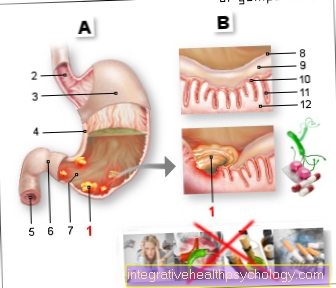


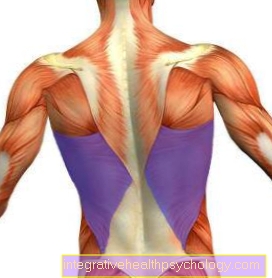





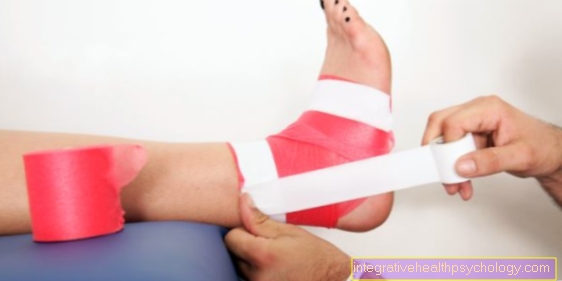
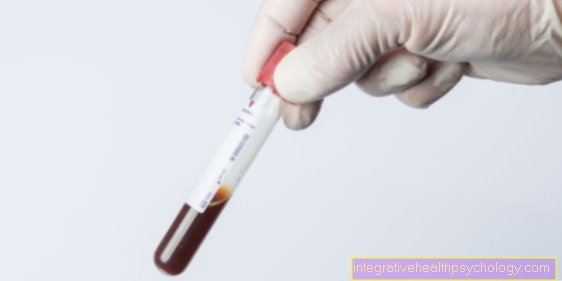
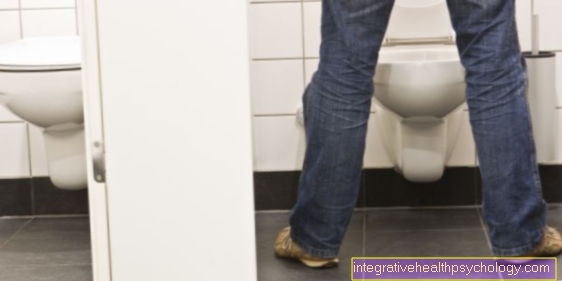










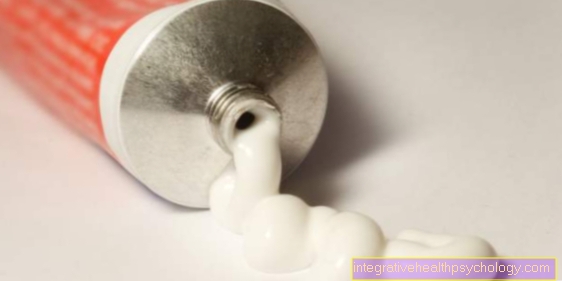
.jpg)
.jpg)